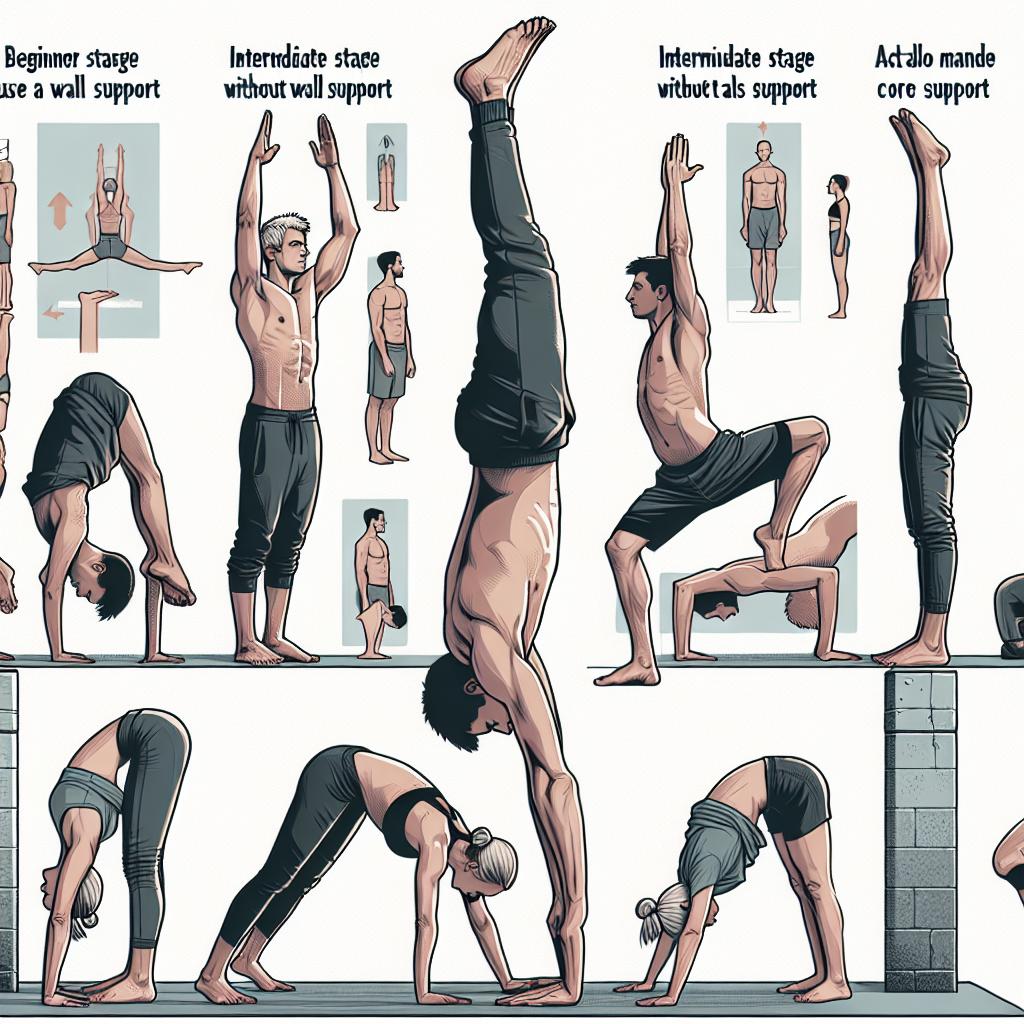Mastering the Art of the Handstand: A Comprehensive Guide
Handstands represent a perfect blend of strength, balance, and artistry. Whether you’re looking to enhance your yoga practice, refine your gymnastics skills, or simply impress your friends, mastering the handstand is a rewarding goal. In this guide, we’ll break down the essential components of performing a handstand into digestible steps. You’ll learn how to build the necessary strength and mobility, how to align your body for optimal balance, and how to overcome fear by practicing safely. Additionally, we’ll delve into the key aspects of finding your balance and the importance of practice recovery. By following these guidelines, you’ll be well-equipped to steady yourself on your hands and hold that picture-perfect pose.
Develop strength and accuracy of the hollow body line.
To execute a successful handstand, one must first establish a solid foundation of core strength, which is best developed through mastering the hollow body line. This position involves a slight arch in your back with your ribs pulled in and lower back pressing against the floor, engaging your abdominal muscles. Strengthening this line is crucial as it allows you to maintain balance and stability while upside down.
Effective exercises to develop this core strength include hollow body holds, planks, and V-ups. These exercises target the abdominal muscles and improve the overall stability of your torso, which is vital during a handstand. Practicing these regularly will not only build the necessary strength but also enhance your body awareness and control, critical components when transitioning to an inverted position.
Consistency is key when working on your hollow body line. Dedicate a portion of your workout routine to these exercises and gradually increase their intensity as you build strength. Over time, you’ll notice improved core functionality and control, making your handstand practice more effective and enjoyable.
First, ensure you have the prerequisite mobility to perform a handstand.
Mobility, particularly in the shoulders and wrists, plays a vital role in holding a handstand. Tight or inflexible shoulders can hinder your ability to achieve a straight line while upside down, which is crucial for balance and alignment. To enhance shoulder mobility, incorporate exercises like arm circles, shoulder dislocates with a resistance band, and overhead stretches into your routine.
Your wrists also need to be flexible and strong to support your body weight during a handstand. Wrist stretches and strengthening exercises such as wrist curls and finger extension drills will prepare your wrists for the demands of handstand practice. By focusing on these areas, you’ll reduce your risk of injury and improve your overall handstand form.
Regularly assessing and improving your mobility will prevent unnecessary strain and ensure that your body can accommodate the positions required for a successful handstand. Setting aside time for these exercises will enhance both your performance and safety during practice.
Second, know how to align your body for a stronger line and better balance.
Achieving the correct body alignment is crucial to maintaining balance in a handstand. When aligned correctly, your body should form a straight line from your wrists to your toes, with your shoulders engaged and your core active. This alignment minimizes energy expenditure and optimizes balance, making it easier to hold the position.
Start by practicing alignment drills against a wall, ensuring your entire form is straight and your body is not arching or bending. Utilize visual aids, like a mirror or video recording, to self-correct and adjust your form as necessary. Engaging your core and glute muscles actively will also help keep your body in the optimal handstand position.
With practice, you’ll develop the proprioceptive awareness necessary to maintain this alignment without external cues. This self-awareness is crucial as you progress to free-standing handstands, where maintaining alignment becomes an internalized practice.
Next, practice failing out of handstand so you can eliminate fear.
A common barrier to mastering handstands is the fear of falling. By practicing safe exit strategies, you can overcome this fear and focus on improving your balance and control. Learning how to cartwheel or gracefully tilt out of a handstand will reduce anxiety and build confidence.
Start with basic exercises against a wall to familiarize yourself with different ways of exiting a handstand. Experiment with a slight turn-out or a step-down with one foot to regain stability. Knowing that you can safely exit the pose will encourage you to explore your limits, allowing for greater progress in your handstand practice.
With time, falling out of a handstand will become an inconsequential part of practice. By eliminating the fear associated with falling, you open yourself to more daring attempts and ultimately, quicker mastery of the handstand.
Find your balance.
Once strength and alignment have been developed, the next challenge is finding and maintaining balance. Handstands test your ability to control shifts in weight distribution. Engaging your fingers and wrists actively is key to recalibrating your center of gravity and sustaining the position.
Practice handstand holds against a wall to find your “balance sweet spot,” the point at which little adjustment is needed to stay upright. Focus on gently shifting your weight using your fingertips and wrists as stabilizers. This technique is subtle but powerful, enabling small corrections to keep you in place.
Patience and persistence are essential in developing balance. Gradually increase your time in free-standing handstands, and don’t be discouraged by frequent adjustments or falls. Each attempt builds greater control and confidence, bringing you closer to mastering the handstand.
Practice as often as you can recover from.
Consistency in practice, balanced with adequate recovery, is crucial for mastering handstands. Aim to practice regularly but listen to your body, ensuring you don’t overextend yourself. Muscular fatigue and overtraining can lead to injuries, which can hinder your progress.
Design a training schedule that includes rest days, allowing your muscles to recover and strengthen. Complement handstand practice with cross-training activities such as yoga or pilates to encourage muscle recovery. This holistic approach nurtures sustainable progress.
With time, patience, and consistent practice, your handstand skills will improve. Celebrate small victories along the way and remain persistent; mastery in handstand is a marathon, not a sprint. Regular, mindful practice and recovery will lead to success in your handstand journey.
Final Thoughts
| Step | Description |
|---|---|
| Develop strength and accuracy of the hollow body line | Enhance core strength with exercises like hollow body holds for stability. |
| Prerequisite mobility | Ensure shoulder and wrist flexibility to support the handstand’s demands. |
| Body alignment | Align your body correctly for optimal balance and reduced energy expenditure. |
| Practice failing safely | Overcome fear by practicing safe handstand exits like cartwheels. |
| Find your balance | Use fingers and wrists for subtle weight shifts to maintain balance. |
| Practice and recovery | Practice consistently, allowing for recovery to avoid overtraining injuries. |


